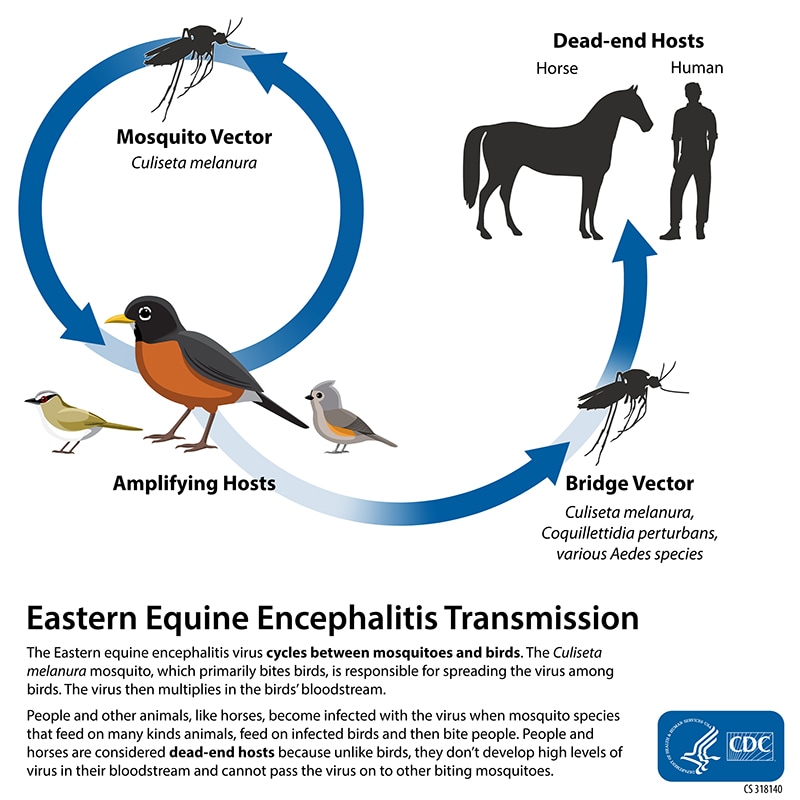Transmission

Eastern equine encephalitis (EEE) virus is maintained in a cycle between Culiseta melanura mosquitoes and avian hosts in freshwater hardwood swamps. Culiseta melanura is not considered to be an important vector of EEE virus to people because it feeds almost exclusively on birds. Transmission to people requires another mosquito species to create a “bridge” between infected birds and uninfected mammals, such as people or horses. Most of the bridge species are within the Aedes, Coquillettidia, and Culex genera. EEE virus has been documented to be transmitted through organ transplantation with one organ donor transmitting the infection to three organ transplant recipients.
Horses are susceptible to EEE virus infection and many cases are fatal. EEE virus infections in horses, however, do not increase risk for human infections because horses (like humans) are considered to be “dead-end” hosts for the virus (i.e., the concentration of virus in their bloodstreams is usually insufficient to infect mosquitoes). There is a vaccine to prevent EEE virus infection in horses.